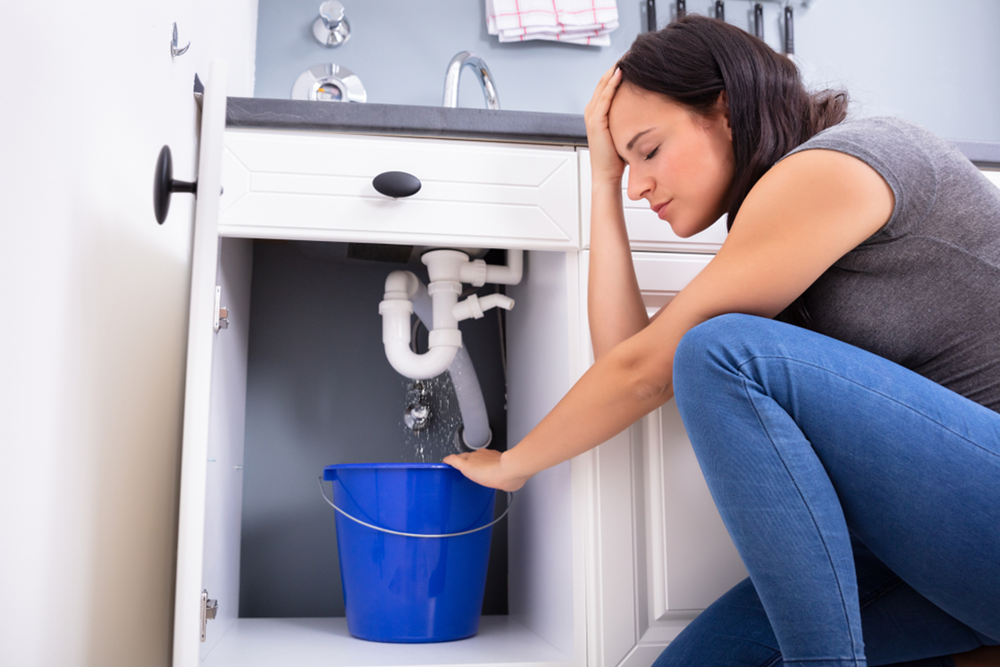Effortless Ways to Repair a Leaky Waste Disposal Unit
Effortless Ways to Repair a Leaky Waste Disposal Unit
Blog Article
This great article below involving The Handy Guide To Fixing Your Garbage Disposal Leaking is relatively motivating. Give it a try and draw your own conclusions.

Garbage disposals are important kitchen devices that assist in dealing with food waste successfully. Nevertheless, a leaking waste disposal unit can be a frustrating and messy trouble to handle. The good news is, numerous leakages can be repaired conveniently with a few easy actions. In this article, we will certainly discuss exactly how to deal with a leaking garbage disposal properly.
Introduction
Garbage disposals are set up under cooking area sinks and are designed to shred food waste into smaller pieces, allowing it to pass through the plumbing system quickly. While these gadgets are normally trusted, leakages can take place with time as a result of deterioration, loose connections, or damage to the unit.
Common Causes of Leakages in Waste Disposals
Worn Seals and Gaskets
Seals and gaskets play a crucial duty in protecting against water from dripping out of the waste disposal unit. Gradually, these elements can weaken, leading to leakages around the disposal system.
Loose Connections
The links between the garbage disposal and the pipes system can come to be loose with time, triggering water to leak out throughout operation.
Splits or Holes in the Disposal Device
Physical damage to the waste disposal unit, such as splits or openings in the real estate, can likewise result in leakages.
Identifying the Source of the Leakage
Before trying to repair a dripping waste disposal unit, it is vital to recognize the resource of the leakage. This can commonly be done through aesthetic evaluation or by carrying out easy tests.
Visual Assessment
Check the waste disposal unit unit carefully for any kind of signs of water leak. Pay close attention to areas around seals, gaskets, and link factors.
Checking for Leakages
One method to evaluate for leaks is by running water with the disposal system and checking for any noticeable signs of leak.
Tools and Materials Needed for Fixing a Dripping Garbage Disposal
Prior to beginning the repair work procedure, gather the needed tools and materials, consisting of a screwdriver, flexible wrench, plumber's putty, replacement seals or gaskets, and epoxy or patching material for repairing fractures or holes.
Step-by-Step Guide to Fixing a Leaking Waste Disposal Unit
Shut off the Power
Before trying any kind of repair work, make certain that the power to the waste disposal unit unit is turned off to avoid the threat of electric shock.
Locate the Leak
Recognize the precise area of the leakage and determine the cause.
Tighten up Links
Utilize a wrench to tighten up any kind of loosened connections in between the disposal unit and the plumbing system.
Replace Seals or Gaskets
If the leak results from used seals or gaskets, eliminate the old components and change them with new ones.
Patching Splits or Holes
For splits or holes in the disposal unit, usage epoxy or a suitable patching material to secure the broken area.
Checking the Garbage Disposal After Repair
Once the repair service is full, test the waste disposal unit by running water with it to make certain that the leakage has been dealt with.
Preventive Upkeep Tips to Prevent Future Leakages
To prevent future leakages, it is essential to do routine upkeep on your waste disposal unit. This consists of keeping it clean, preventing putting non-food things or difficult things down the disposal, and occasionally checking for leakages or various other problems.
Conclusion
To conclude, fixing a dripping garbage disposal is a reasonably simple procedure that can be completed with standard tools and materials. By complying with the steps laid out in this post and practicing preventive upkeep, you can keep your waste disposal unit in good working condition and stay clear of expensive repair work in the future.
HERE’S HOW TO FIX YOUR GARBAGE DISPOSAL
WHAT TO DO IF SOMETHING IS STUCK IN YOUR GARBAGE DISPOSAL
If the impeller won’t turn, there’s probably something stuck in the disposal. It could be a steak bone or peach pit, although plumbers report pulling all sorts of inappropriate objects out of disposals, such as bottle caps or aluminum foil. Make sure power to the disposal is off, and look inside to see if you can see the source of the jam.
Never stick your fingers in a disposal. Pull out anything you see with tongs or pliers.
If the disposal still won’t work, it may be time to call a plumber or consider buying a new disposal. GEM Plumbing & Heating is here for all of your garbage disposal needs.
WHAT TO DO IF YOUR GARBAGE DISPOSAL DRAIN IS CLOGGED
Take everything out from underneath your sink and put a bucket or other container under your disposal to catch any water that drains out. Disconnect your disposal from the power supply. If it’s plugged into a wall outlet, unplug it. If it’s hardwired into an electrical box, go to the electrical panel and turn off the breaker for the disposal. Pour ¼ cup of baking soda into the drain, followed by ½ cup of white vinegar. Give the solution a few minutes to fizz and do its work. Look into the disposal with a flashlight to see if you can see an object that might be causing the clog. If you see it, remove it using tongs or pliers. MORE TIPS ON DEALING WITH A CLOGGED GARBAGE DISPOSAL
Never use drain cleaner in a garbage disposal. It can damage the plastic parts inside the disposal. You can also be splashed with the caustic liquid while working to clear the clog. Beware! Never stick your fingers into a garbage disposal. Trust us — not a good idea. In many instances, your dishwasher drains through your garbage disposal. This allows the disposal to grind any large food particles that may be drained out of your dishwasher. There are some jurisdictions, however, where the plumbing code prohibits such a connection. WHAT TO DO WHEN YOUR DISHWASHER DRAINS THROUGH THE DISPOSAL
Run some water in the sink so your plunger has at least a ½-inch of water to create a seal and plunge vigorously up and down several times. You may need to repeat this several times. Run hot water down the drain to clear any residue that remains.

As a reader about Why Is , I was thinking sharing that topic was sensible. Sharing is caring. Helping others is fun. Thank you for your time. Kindly come visit our blog back soon.
Call Today Report this page